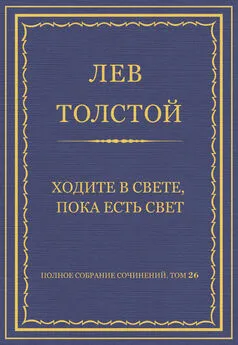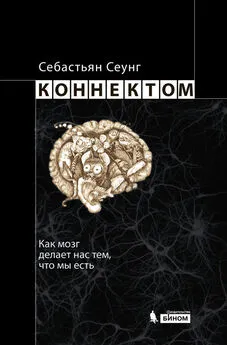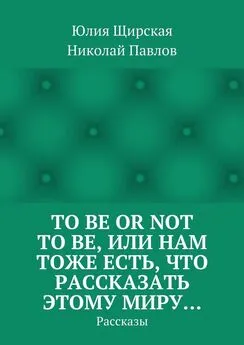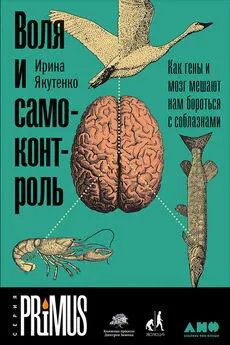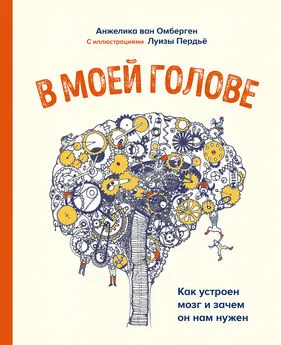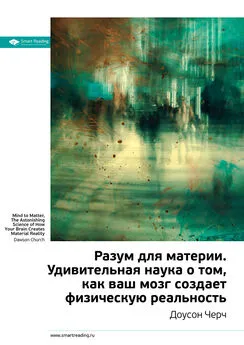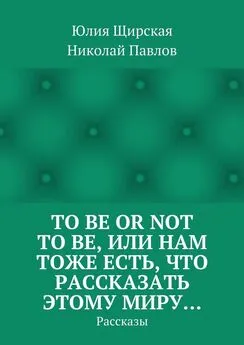Рейчел Херц - Почему мы едим то, что едим [Наука о том, как наш мозг диктует нам, что есть]
- Название:Почему мы едим то, что едим [Наука о том, как наш мозг диктует нам, что есть]
- Автор:
- Жанр:
- Издательство:Литагент 5 редакция
- Год:2021
- Город:Москва
- ISBN:978-5-04-097490-0
- Рейтинг:
- Избранное:Добавить в избранное
-
Отзывы:
-
Ваша оценка:
Рейчел Херц - Почему мы едим то, что едим [Наука о том, как наш мозг диктует нам, что есть] краткое содержание
Какие музыкальные жанры лучше всего подчеркивают вкус красного вина? Почему нам хочется калорийной пищи, когда нас постигают неудачи? Как наша личность соотносится с предпочтением сладкого или соленого?
Эта книга, словно чуткий проводник, помогает читателю уловить и распознать сенсорные, психологические и физиологические факторы, лежащие в основе пищевых привычек. С этим знанием вы сможете сделать каждый прием пищи осознанным и здоровым, а также получать только удовольствие от еды.
Почему мы едим то, что едим [Наука о том, как наш мозг диктует нам, что есть] - читать онлайн бесплатно ознакомительный отрывок
Интервал:
Закладка:
25. J. Andrade et al., «Use of a clay modeling task to reduce chocolate craving», Appetite 58 (2012): 955–963.
26. D. J. Kavanagh, J. Andrade, and J. May, «Imaginary relish and exquisite torture: The elaborated intrusion theory of desire», Psychological Review 112 (2005): 446–467.
ПРИМЕЧАНИЯ К СТР. 121–132
27. R. Kabatznick, The Zen of Eating: Ancient Answers to Modern Weight Problems (New York: Berkeley, 1998).
28. U. Khan and R. Dhar, «Where there is a way, is there a will? The effect of future choices on self-control», Journal of Experimental Psychology: General 136 (2007): 277–288.
29. N. J. Buckland, G. Finlayson, and M. M. Hetherington, «Pre-exposure to diet-congruent food reduces energy intake in restrained dieting women», Eating Behaviors 14 (2013): 249–254.
30. E. Kemps, M. Tiggemann, and S. Bettany, «Non-food odorants reduce chocolate cravings», Appetite 58 (2012): 1087–1090.
31. E. Kemps and M. Tiggemann, «Olfactory stimulation curbs food cravings», Addictive Behaviors 38 (2013): 1550–1554.
32. M. W. Firmin et al., «Effects of olfactory sense on chocolate craving», Appetite 105 (2016): 700–704.
1. B. Wansink, «Environmental factors that increase the food intake and consumption volume of unknowing consumers», Annual Reviews of Nutrition 24 (2004): 455–479.
2. G. J. Privitera and H. E. Creary, «Proximity and visibility of fruits and vegetables influence intake in a kitchen setting among college students», Environment and Behavior 45 (2013): 876–886.
3. C. Michel et al., «A taste of Kandinsky: Assessing the influence of the artistic visual presentation of food on the dining experi-ence», Flavour 3 (2014): 1-11.
4. G. Morrot, F. Brochet, and D. Dubourdieu, «The color of odors», Brain and Language 79 (2001): 309–320.
5. M. Shankar et al., «An expectations-based approach to explaining the cross-modal influence of color on orthonasal olfactory identification: The influence of the degree of discrepancy», Attention, Perception, and Psychophysics 72 (2010): 1981–1993.
6. K. Dutton, «The power to persuade», Scientific American Mind 21 (2010): 24–31; F. Brochet, «Chemical object representation in the field of consciousness», 2001, заявка на получение гран-при Академии «Аморим» с последующей работой над докторской. Факультет энологии, Лаборатория общей энологии, Таланс, Франция.
ПРИМЕЧАНИЯ К СТР. 133–137
7. H. Plassmann et al., «Marketing actions can modulate neural representations of experienced pleasantness», Proceedings of the National Academy of Sciences 105 (2008): 1050–1054.
8. R. S. Herz and J. von Clef, «The influence of verbal labeling on the perception of odors: Evidence for olfactory illusions?» Perception 30 (2001): 381–391.
9. I. E. de Araujo et al., «Cognitive modulation of olfactory processing», Neuron 46 (2005): 671–679.
10. B. C. Regan et al., «Fruits, foliage and the evolution of primate colour vision», Philosophical Transactions of the Royal Society B: Biological Sciences 356 (2001): 229–283.
11. J. Johnson and F. M. Clydesdale, «Perceived sweetness and redness in colored sucrose solutions», Journal of Food Science 47 (1982): 747–752.
12. R. Fernandez-Vazquez et al., «Color influences sensory perception and liking of orange juice», Flavour 3 (2014): 1.
13. M. U. Shankar et al., «The influence of color and label information on flavor perception», Chemosensory Perception 2 (2009): 53–58.
14. D. A. Zellner, A. M. Bartoli, and R. Eckard, «Influence of color on odor identification and liking ratings», American Journal of Psychology 104 (1991): 547–561.
15. M. Shankar, C. A. Levitan, and C. Spence, «Grape expectations: The role of cognitive influences in color-flavor interactions», Consciousness and Cognition 19 (2010): 380–390.
16. Классический молекулярный гастрономический метод «сферификации».
17. См. D. Wadhera and E. D. Capaldi-Phillips, «A review of visual cues associated with food on food acceptance and consumption», Eating Behaviors 15 (2014): 132–143.
18. B. Wansink, «Environmental factors that increase the food intake and consumption volume of unknowing consumers», Annual Reviews of Nutrition 24 (2004): 455–479.
19. B. Piqueras-Fiszman and C. Spence, «The influence of the color of the cup on consumers’ perception of a hot beverage», Journal of Sensory Studies 27 (2012): 324–331; N. Gueguen, «The effect of glass colour on the evaluation of a beverage’s thirst-quenching quality», Current Psychology Letters, Behaviour, Brain and Cognition 11 (2003): 1–6.
ПРИМЕЧАНИЯ К СТР. 138–145
20. V. Harrar, B. Piqueras-Fiszman, and C. Spence, «There’s more to taste in a coloured bowl», Perception – London 40 (2011): 880–882.
21. B. Piqueras-Fiszman et al., «Is it the plate or is it the food? Assessing the influence of the color (black or white) and shape of the plate on the perception of the food placed on it», Food Quality and Preference 24 (2012): 205–208.
22. O. Genschow, L. Reutner, and M. Wanke, «The color red reduces snack food and soft drink intake», Appetite 58 (2012): 699–702.
23. A. Geier, B. Wansink, and P. Rozin, «Red potato chips: Segmentation cues can substantially decrease food intake», Health Psychology 31 (2012): 398–401.
24. Чарльз Спенс, речь на симпозиуме Международного общества нейрогастрономии, 7 ноября 2015 года, Кентуккский университет.
25. «Feeling blue? Key to happiness is eating yellow food», Sunday Express, October 13, 2016, http://www.express. co.uk/news/uk/720769/eggs-cheese-yellow-food-happiness-scientific-research.
26. N. Diliberti et al., «Increased portion size leads to increased enerjgy intake in a restaurant meal», Obesity Research 12 (2004): 562–568.
27. B. Wansink, «Environmental factors that increase the food intake and consumption volume of unknowing consumers», Annual Reviews of Nutrition 24 (2004): 455–479.
28. B. Wansink and J. Kim, «Bad popcorn in big buckets: Portion size can influence intake as much as taste», Journal of Nutrition Education and Behavior 37 (2005): 242–245.
29. D. Marchiori, O. Corneille, and O. Klein, «Container size influences snack food intake independently of portion size», Appetite 58 (2012): 814–817.
30. From D. Wadhera and E. D. Capaldi-Phillips, «A review of visual cues associated with food on food acceptance and consumption», Eating Behaviors 15 (2014): 132–143.
31. Там же.
32. B. Wansink, K. van Ittersum, and J. E. Painter, «Ice cream illusions: Bowls, spoons, and self-served portion sizes», American Journal of Preventive Medicine 31 (2006): 240–243.
ПРИМЕЧАНИЯ К СТР. 145–152
33. B. Wansink, K. Van Ittersum, and J. E. Painter, «Ice-cream illusions: Bowls, spoons, and self-served portion sizes», American Journal of Preventive Medicine 31 (2006): 240–243; K. Van Ittersum and B. Wansink, «Plate size and color suggestibility: The Delboeuf Illusion’s bias on serving and eating behavior», Journal of Consumer Research 39 (2012): 215–228.
34. B. Wansink, J. E. Painter, and J. North, «Bottomless bowls: Why visual cues of portion size may influence intake», Obesity Research 13 (2005): 93-100.
35. B. Wansink and C. R. Payne, «Counting bones: Environmental cues that decrease food intake», Perceptual and Motor Skills 104 (2007) 273–276.
36. Wansink, Painter, and North, «Bottomless bowls».
37. См. Wadhera and Capaldi-Phillips, «A review of visual cues associated with food».
38. B. Wansink and P. Chandon, «Meal size, not body size, explains errors in estimating the calorie content of meals», Annals of internal medicine 145 (2006): 326–332.
39. https://www.ers.usda.gov/amber-waves/2011/march/will-calo-rie-labeling; Stephanie Rosenbloom, «Calorie Data to Be Posted at Most Chains», New York Times, March 23, 2010, http://www. nytimes.com/2010/03/24/business/24menu.html?_r=0.
40. D. W. Tang, L. K. Fellows, and A. Dagher, «Behavioral and neural valuation of foods is driven by implicit knowledge of caloric con-tent», Psychological Science 25 (2014): 2168–2176.
41. Chris Fuhrmeister, «Google Wants to Counit the Calories in Your Food Porn Photos», Eater, June 2, 2015, http://www.eater. com/2015/6/2/8715449-google-calorie-count-photos-im2calories.
42. J. Cantor et al., «Five years later: Awareness of New York City’s calorie labels declined, with no changes in calories purchased», Health Affairs 34 (2015): 1893–1990.
43. S. N. Bleich et al., «Reducing sugar-sweetened beverage consumption by providing caloric information: How black adolescents alter their purchases and whether the effects persist», American Journal of Public Health 104 (2014): 2417–2424.
44. Harvard Health Publications: Harvard Medical School, «Calories burned in 30 minutes for people of three different weights,» updated January 27, 2016, http://www. health.harvard.edu/diet-and-weight-loss/calories-burned-in-30-minutes-of-leisure-and-routine-activities.
ПРИМЕЧАНИЯ К СТР. 152–158
45. https://sageproject.com/product/driscolls-strawberries-16-oz.
46. B. Wansink and K. Van Ittersum, «Bottoms up! The influence of elongation on pouring and consumption volume», Journal of Consumer Research 30 (2003): 455–463; Wansink, «Environmental factors that increase the food intake and consumption volume of unknowing consumers».
47. A. S. Attwood et al., «Glass shape influences consumption rate for alcoholic beverages», PLoS ONE 7 (2012): e43007.
48. Dixon, «Cadbury facing revolt».
49. C. Spence, «Assessing the influence of shape and sound symbolism on the consumer’s response to chocolate», New Food 17 (2014): 59–62.
50. M. T. Fairhurst et al., «Bouba-Kiki in the plate: Combining crossmodal correspondences to change flavour experience», Flavour 4 (2015): 22.
51. P. C. Stewart and E. Goss, «Plate shape and colour interact to influence taste and quality judgments», Flavour 2 (2013): 27.
52. P. Liang et al., «Visual influence of shapes and semantic familiarity on human sweet sensitivity», Behavioral Brain Research 253 (2013): 42–47.
53. Spence, «Assessing the influence of shape and sound symbolism on the consumer’s response to chocolate».
54. См. C. Spence and M. K. Ngo, «Assessing the shape symbolism of the taste, flavour, and texture of foods and beverages», Flavour 1 (2012): 12.
55. V. Harrar and C. Spence, «The taste of cutlery: How the taste of food is affected by the weight, size, shape, and colour of the cutlery used to eat it», Flavour 2 (2013): 1-13.
56. A. J. Bremner et al., «‘Bouba’ and ‘Kiki’ in Namibia? A remote culture make similar shape-sound matches, but different shapetaste matches to Westerners», Cognition 126 (2013): 165–172.
Читать дальшеИнтервал:
Закладка:
![Обложка книги Рейчел Херц - Почему мы едим то, что едим [Наука о том, как наш мозг диктует нам, что есть]](/books/1061252/rejchel-herc-pochemu-my-edim-to-chto-edim-nauka-o-t.webp)

